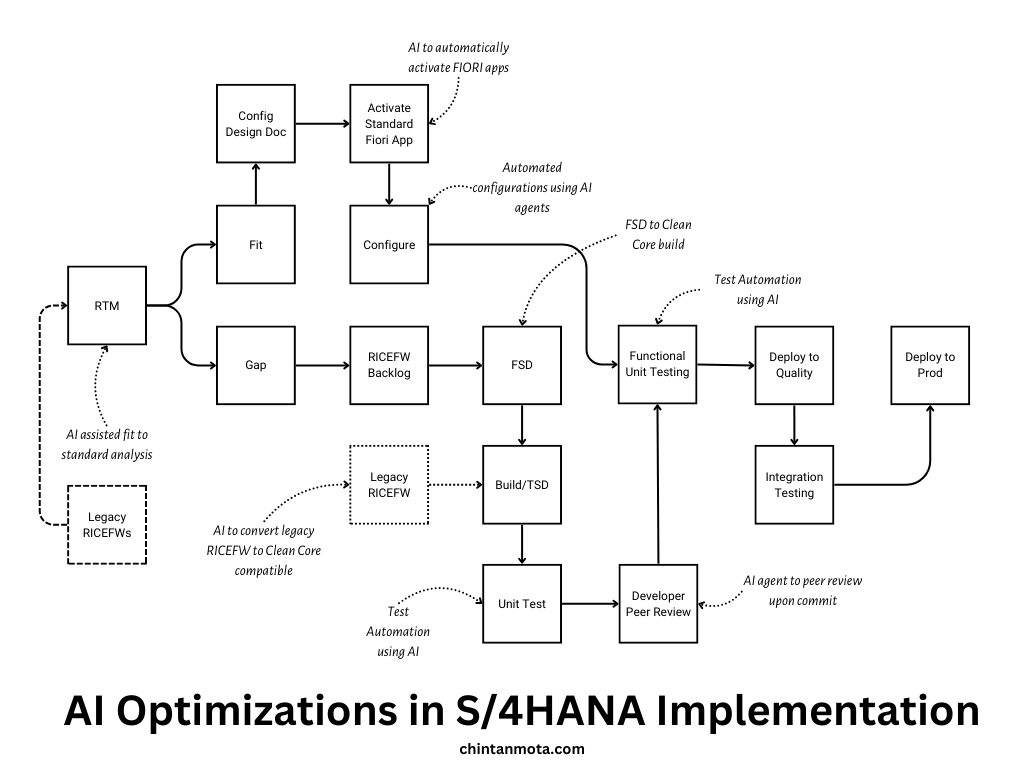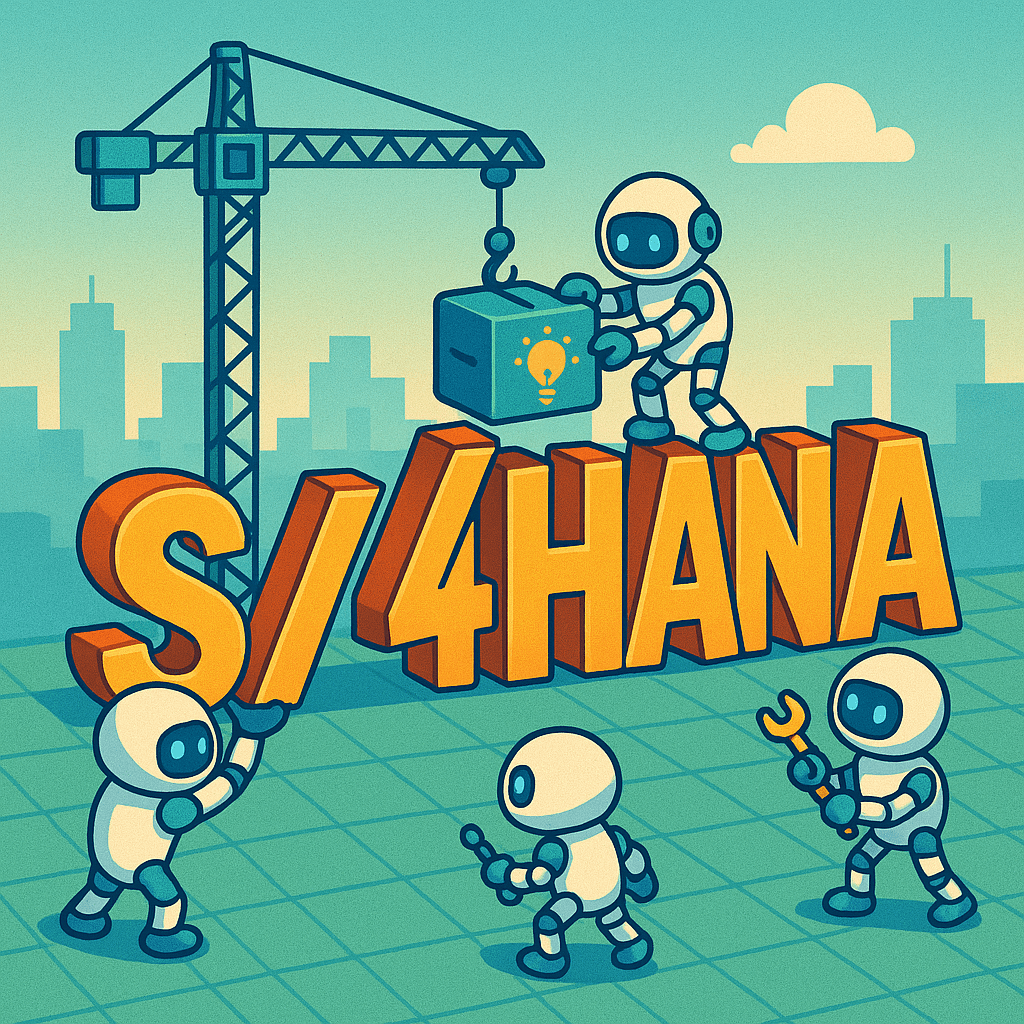S/4HANA implementations can be complex, time-consuming, and full of unexpected challenges. But what if AI could take some of the heavy lifting off our shoulders? That’s exactly what’s happening now—AI is transforming the way we analyze, configure, test, and deploy SAP systems. Let’s break down where and how AI could potentially make a real difference in S/4HANA projects.

While there are many ways AI can make a difference in SAP S/4HANA implementations, let’s look at 6 most important areas where AI has the most potential.
1. AI-Assisted Fit-to-Standard Analysis
One of the first steps in any S/4HANA implementation is determining which processes fit standard functionalities and which require custom development. Traditionally, this is a manual task that involves comparing business requirements with SAP best practices. AI can step in here by:
- Automatically analyzing business requirements and comparing them to SAP standard functionality (RTM analysis).
- Identifying potential gaps where custom developments (RICEFWs) are needed.
- Suggesting alternative standard solutions to minimize custom development (a.k.a. Clean Core optimization).
Why it matters: This speeds up the analysis phase and helps teams focus on strategic decision-making rather than sifting through hundreds of requirements manually.
2. Automated Fiori App Activation & Configurations
Once you determine that a business process can be supported by a standard Fiori app, the next step is activation and configuration. A typical S/4HANA implementation can require thousands of Fiori app activations. AI can automate this by:
- Detecting required apps based on RTMs and business process requirements.
- Activating the correct Fiori apps automatically.
- Configuring apps using AI-powered agents based on configuration design documents.
Why it matters: This eliminates tedious manual Fiori app activation work and ensures that standard configurations are applied according to configuration design documents.
3. Converting Legacy RICEFW to Clean Core
One of the biggest challenges in any S/4HANA migration is dealing with legacy custom developments. AI can help here by:
- Scanning legacy RICEFW objects and identifying redundant or obsolete developments.
- Suggesting Clean Core-compatible alternatives using SAP BTP and side-by-side extensibility.
- Automatically refactoring code to align with S/4HANA and BTP architecture.
Why it matters: This keeps the S/4HANA system clean and future-proof, reducing technical debt from the get-go.
4. AI-Driven Test Automation
Testing is a major bottleneck in any SAP project. AI can streamline testing by:
- Generating automated test scripts based on process documentation (FSD to test case automation).
- Running predictive tests to identify potential failures before execution.
- Enabling self-healing test scripts that adjust when UI or configurations change.
Why it matters: Automated AI-driven testing ensures faster and more reliable deployments while reducing manual effort.
5. AI-Powered Developer Peer Reviews
Code reviews are crucial but time-consuming. AI can assist developers by:
- Reviewing code upon commit for best practices and Clean Core adherence.
- Suggesting performance optimizations and security enhancements.
- Checking for common errors and inconsistencies.
Why it matters: This allows developers to receive instant feedback, improving code quality and reducing rework.
6. AI-Supported Deployment & Integration Testing
Before moving to production, integration testing is essential. AI can optimize this phase by:
- Automating integration test scenarios based on historical test cases.
- Detecting potential conflicts before they impact production.
- Recommending risk-mitigation strategies based on previous deployments.
Why it matters: AI-driven integration testing makes go-lives smoother and reduces post-deployment issues.
Final Thoughts
AI is a Game-Changer for S/4HANA Implementations.
AI isn’t here to replace consultants and developers—it’s here to make their lives easier. From automating tedious tasks to improving decision-making, AI-driven enhancements in S/4HANA implementations can lead to:
- Faster project timelines
- Reduced manual effort
- Higher system quality
- Lower total cost of ownership
As AI technology continues to evolve, we can expect even more innovative solutions to optimize SAP implementations. The key is to embrace AI-driven automation and let it handle the grunt work, so teams can focus on strategic, high-value tasks.
Are you exploring AI for your SAP projects yet? Talk to us to learn how AI can transform your S/4HANA journey.
